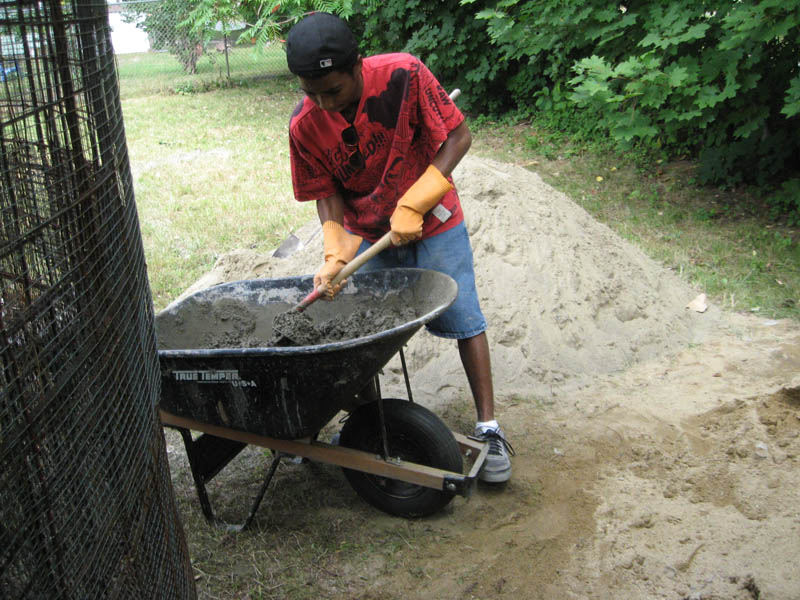
Willow is much stronger than reeds and is slightly easier to plaster.
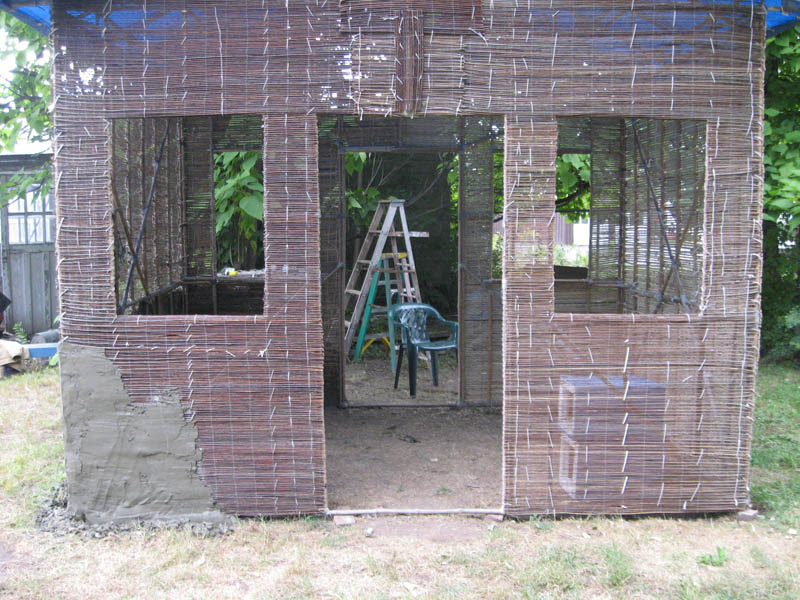
Working around the corner on the split bamboo side
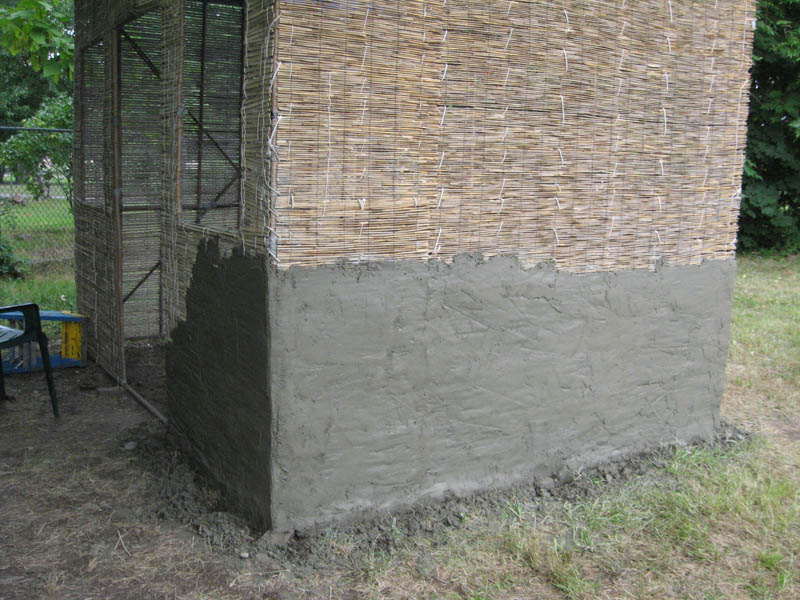
The mixture used used here is 2.5 measures of dry sand to one measure of cement, this mixture is a little rich and avoids possible weak plaster. Traditional mixing without a wheelbarrow is illustrated by some great Cuban humanitarian workers in the Bahamian islands, click here. Rotate younger people on and off the mixing job quickly whatever mixing system is used, give them the opportunity to gain mixing experience but take care lest they become exhausted, and then discouraged.

Willow is much stronger than reeds and is slightly easier to plaster.

Working around the corner on the split bamboo side

This close-up photo shows several stitching patterns as-well-as one method of joining two wall panels. Wall panels may be made on a jig as discussed previously, here. Finished wall armatures are then set in place and lashed together in preparation for plaster as shown. Split bamboo or willow may be attached and mostly stitched to the frame if the frame is built on a jig, areas too far to reach or blocked by the jig panel can be stitched by two people when the armatures are up and lashed together.
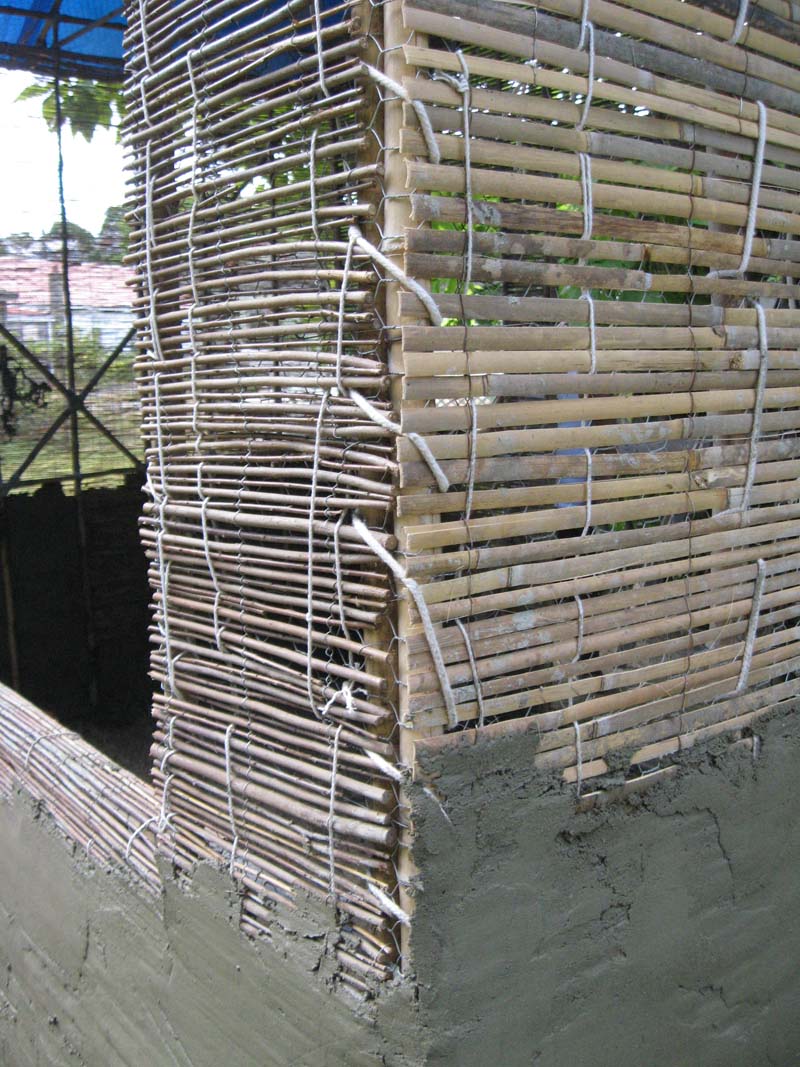
The inside plaster is best done at the same time as the outside to avoid flexing and stressing freshly stiffened but weak plaster on the other side. If this schedule is not possible, then wait a few days for the first side to become strong enough to resist bending from trowel pressure.
Visible bamboo frame members will be covered with fabric and fiber soaked with acrylic and cement mixture. This step is shown further on. Although window frames were not installed before cold weather, this step will be examined in early Spring, 2011. Note that window and doors are included in the $5 per square foot cost projection.
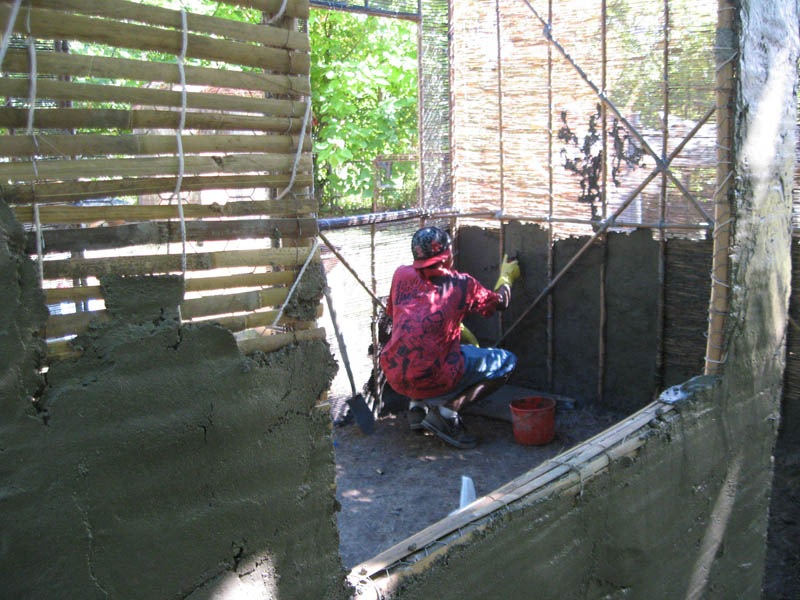
Note : Very little text is included from here on, the pictures show most details, I have read enough to finally be able to rely on photos, which don't need translation. If something in the following photo presentation, is not clear, use the ferrocement.com email contact. (Shelter-2009 also)
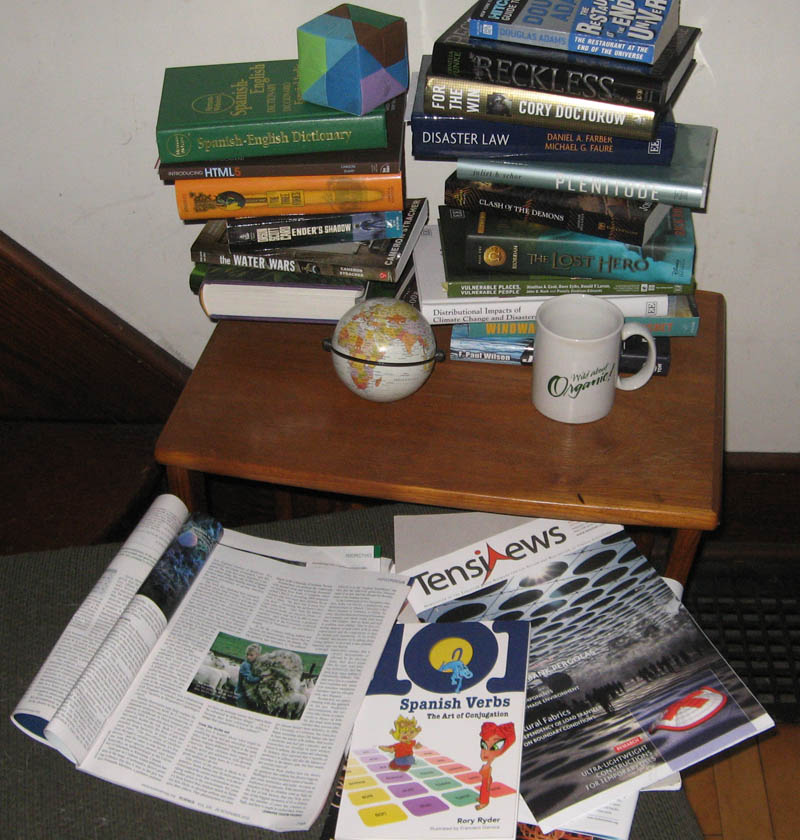
TensiNews is a European magazine of super-light tensile structures cooperatively contributed to by Antoon Versteegde in open-source consortium with Garrett Connelly and this website, ferrocement.com at Self-sheltering.org (see Ephemera, TensiNews, September, 2010).